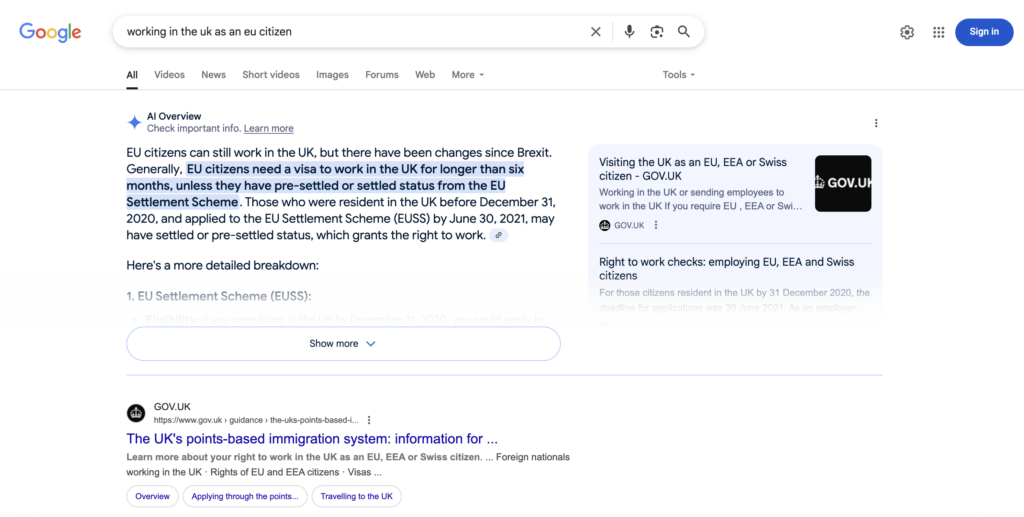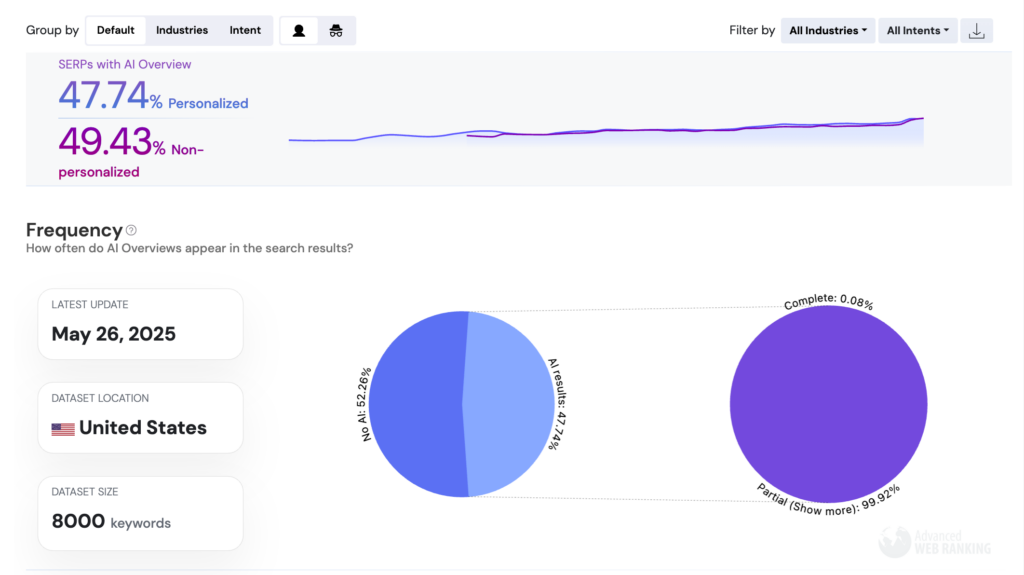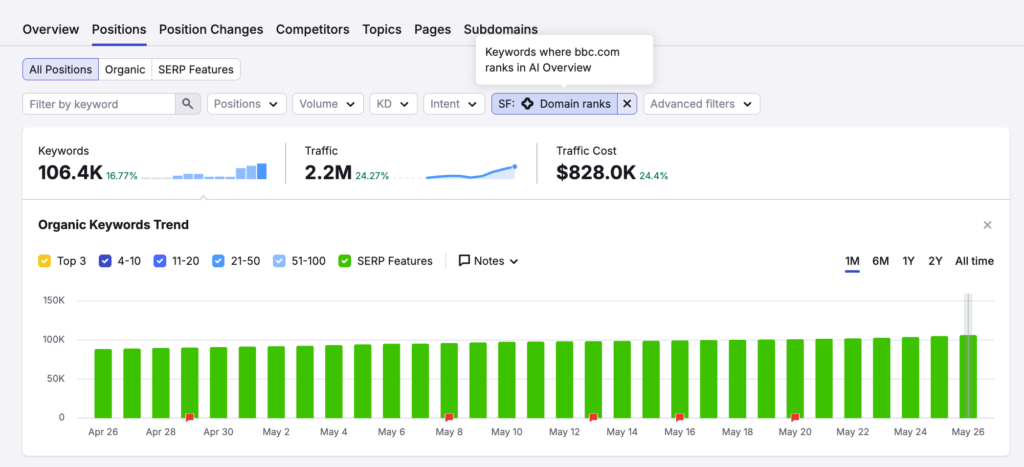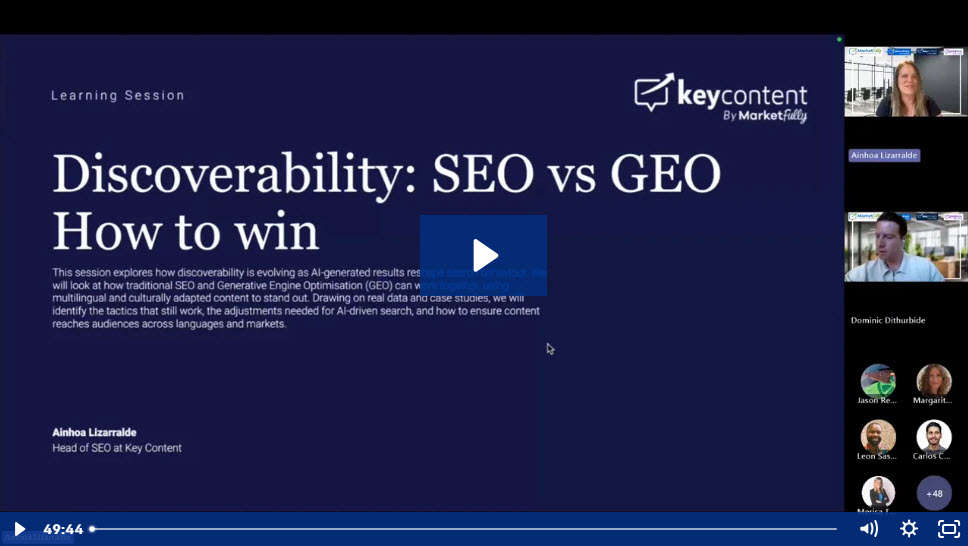A dive into AI Overview and CTR
From the moment Google first teased AI-driven answers in mid-2023, the search landscape has shifted underneath our feet. What began as a curious experiment has become a defining feature of how people find the information they’re looking for. Today, AI Overviews surface on more than one in ten queries, creating a concise, synthesised response above traditional links. This change has created a new trajectory for click-through rates, rippling out far beyond organic rankings.

When fewer clicks signal stronger intent
Overall traffic from organic listings has dipped, especially on broad, high-volume terms. But, those clicks that stay seem to carry more weight. After skimming an AI Overview, users click only when they need more detail or a specific solution. The result is a leaner stream of visitors who arrive knowing more. In sectors with complex decisions like enterprise software, healthcare, and financial services, those clicks tend to translate into higher conversion potential.
Analysis of thousands of queries reveals that most AI Overviews draw from the top ten organic results, which means strong rankings still matter, but the shape of content needs to adapt. Pages built for visitors who already grasp the basics perform best, while brief summaries give way to trust signals, clear next steps, and standout expertise. In practice, that means highlighting unique case studies to show expert bylines and guide readers toward action.

A quiet revolution in branded searches
Amid the noise around zero-click queries, brand searches tell us a different story. When a company’s name appears in an AI Overview, the effect can feel like a nod of endorsement. Users searching for specific brand information usually see a balanced summary, drawn from comparison pages, customer stories, and expert blogs. If your brand shows up here, clicks from paid and organic listings often tick upward.
Brands that thrive in this space share key habits like publishing crisp FAQs, creating clear “X vs. Brand” articles, and feeding the AI’s appetite for depth with customer case studies. Schema markup and rich knowledge panels help AI Overviews find the right source. The payoff is an elevated sense of trust where users feel they’ve validated their choice before even leaving the search page.

The long tail goes local
AI Overviews love nuance. Queries with four or more words now dominate the feature set, because those multi-part questions reflect concrete problems, e.g. “How to fix a leaking shower without shutting off water” or “Best way to manage remote teams across time zones.” When translated word for word, these queries fall flat, because true localisation demands a rewrite through local idioms and search habits. In French markets, phrasing shifts; in Spanish, vocabulary bends to regional usage. Only content built from the ground up for each language holds its own in these AI summaries.
Global brands that settle for direct translations risk missing the mark entirely, while the most effective teams tap into native experts, mapping the shape of each question before formulating answers. They study search patterns by region, mirror tone and structure, then test performance. The result is a network of localised long-form answers that feed AI Overviews with context rather than keywords alone.

The tracking gap and the tools filling it
Despite AI Overviews’ rise, native dashboards seem to lag behind. Google Search Console offers now AI Mode data about impressions or clicks, SEO teams scramble for clarity, turning to specialised platforms that flag which queries trigger Overviews. These tools reveal surprises like, AI sometimes pulls from the third ranking result, or even a deep subpage when topical authority shines. This shows us that we need a holistic strategy, including things like covering your topic thoroughly, mapping content types to overview patterns like lists, definitions, or step-by-step guides, and tracking AI presence along with traditional ranks.
Interpreting the results goes a lot further than simply looking at the metrics. It’s not enough to know you appear in an AI Overview, you need to understand why, and you do this by examining which page formats attract citations, which bylines earn trust, and where there are still content gaps. Then, you need to refine briefs and editorial calendars to close those gaps.

A sea of questions, not sales pitches
Over 99% of AI-triggered queries are looking for information, they ask “how,” “why,” or “what,” rather than “buy.”, highlighting a shift from promotion to education. Generic FAQ dumps and thin listicles vanish from view, and instead, what rises to the top is clean, instructive content that answers real user concerns. Where you want to focus your attention is, clear headings, concise summaries, and depth that shows expertise, so that when a reader lands on the page, they’ve already learned the basics and are now looking for nuance and a deeper understanding.
Marketers need to start focusing on briefs that offer genuine value to readers/potential customers. Start with complex, layered user problems. Invite subject-matter experts to formulate answers, embed internal links that guide readers deeper into your knowledge ecosystem, and design pages for skimming with bold questions, bulletised steps, and summary callouts. This feeds the AI what it’s looking for, but it also comforts readers who are a little savvier than others and want quick clarification before taking the next step.

Authority as currency
As AI Overviews spread, EEAT (Experience, Expertise, Authoritativeness, Trustworthiness) moves from theory into practice. AI doesn’t reward aggressive tactics or keyword stuffing, it rewards clarity and credibility. To become a favoured source of information, brands must highlight expert voices across every touchpoint, like contributor bios, bylines with credentials, and citations of primary research, which all function as trust anchors. Entity-based SEO, which maps connections between concepts and creators, supports this new landscape.
A unified voice across languages and markets builds the sense of a single, authoritative brand, but, local nuances are still an essential part of that. The art lies in weaving consistent standards of expertise into content that speaks the regional dialect. Whether advising on financial planning in Johannesburg or remote-work tools in Rio, the balance of global brand consistency and local jargon will leave you smelling like roses.

A glimpse of tomorrow
The road ahead seems to curve toward deeper integration of AI-driven answers. As search engines refine their models, the bar for quality will only rise and brands that treat AI Overviews as a checkbox will fall behind. Those who build custom, localised answers, backed by real experts, are the ones who’ll thrive in this new space.
At Key Content, our SEO tactic orbits around two questions: Has this content answered the user’s question in fewer than thirty words? And does it invite the reader in, toward a richer resource? By doing this, we know you’re likely to gain AI-backed visibility and a stream of well-qualified visitors primed to convert.
Today’s wins belong to those who welcome precision, local insight, and authentic expertise in their content, meeting the AI-powered reader where they already stand to create a bridge to a deeper story. If you cross that bridge wisely, you’ll lead the way.
Download the full analysis
Explore our detailed full analysis with all the data and sources.
Download the Free eBook





